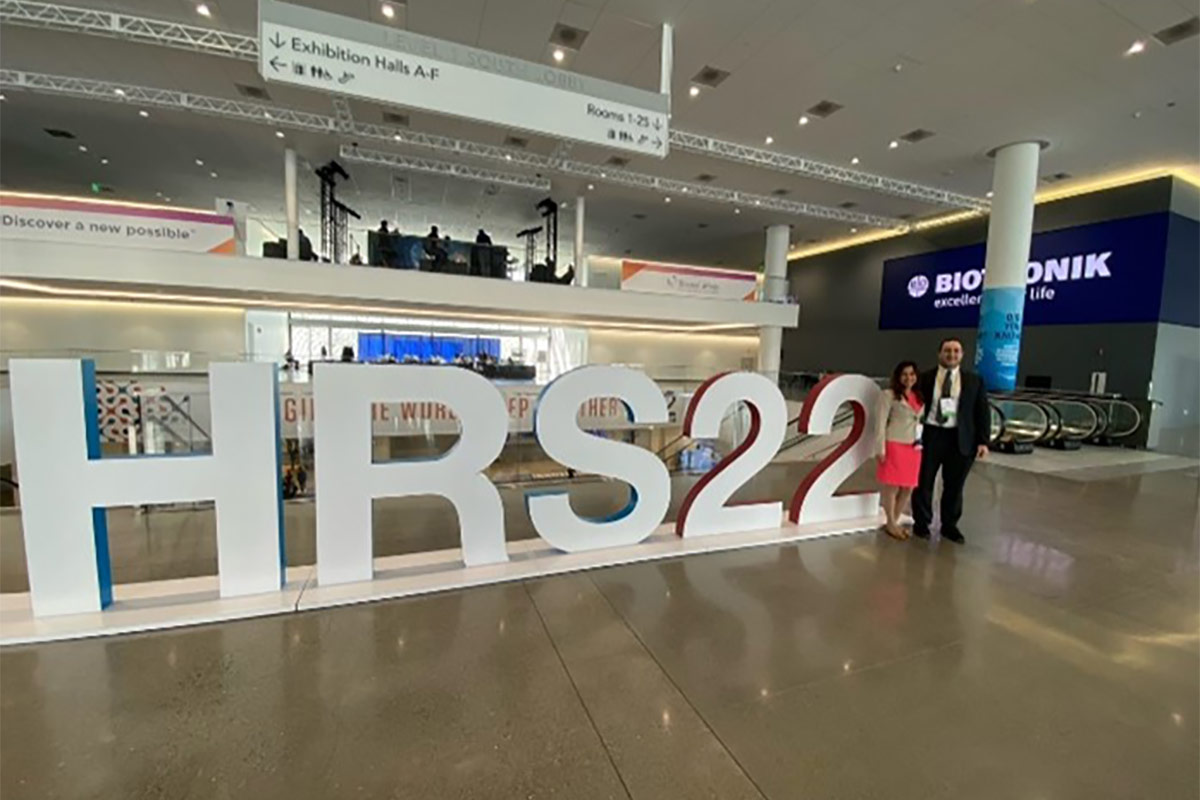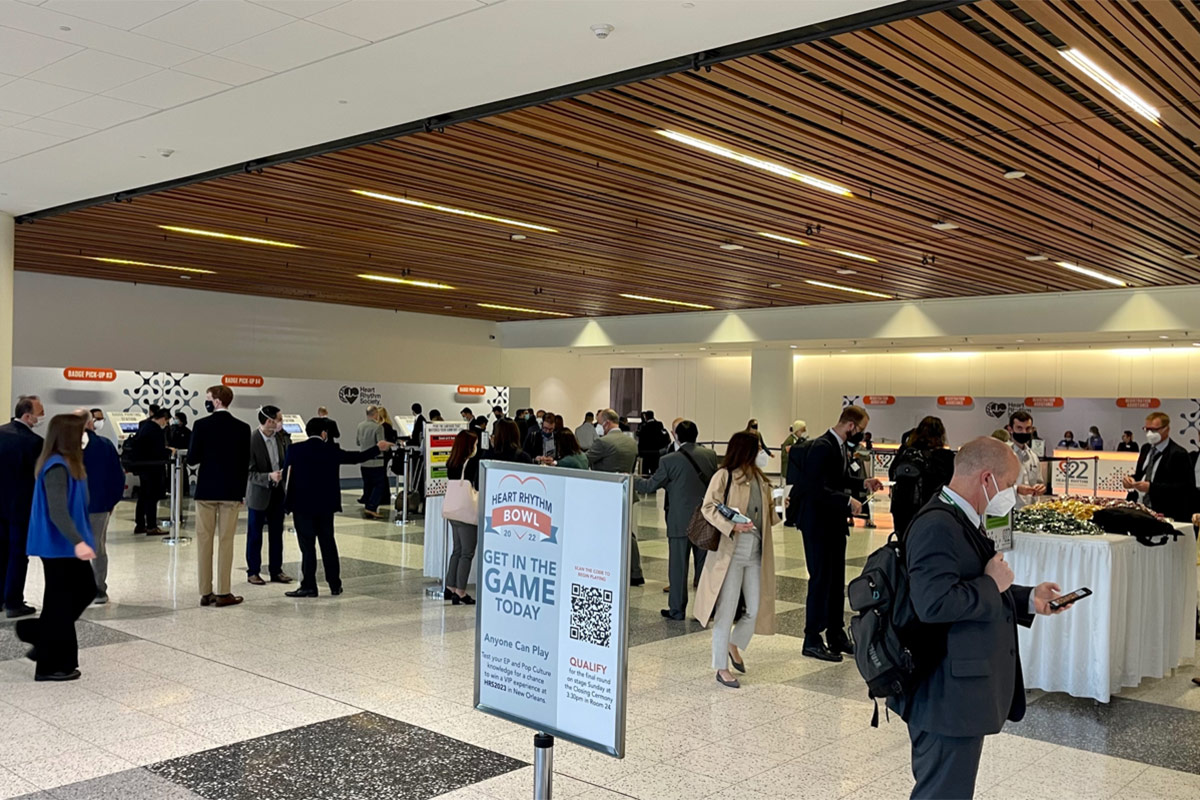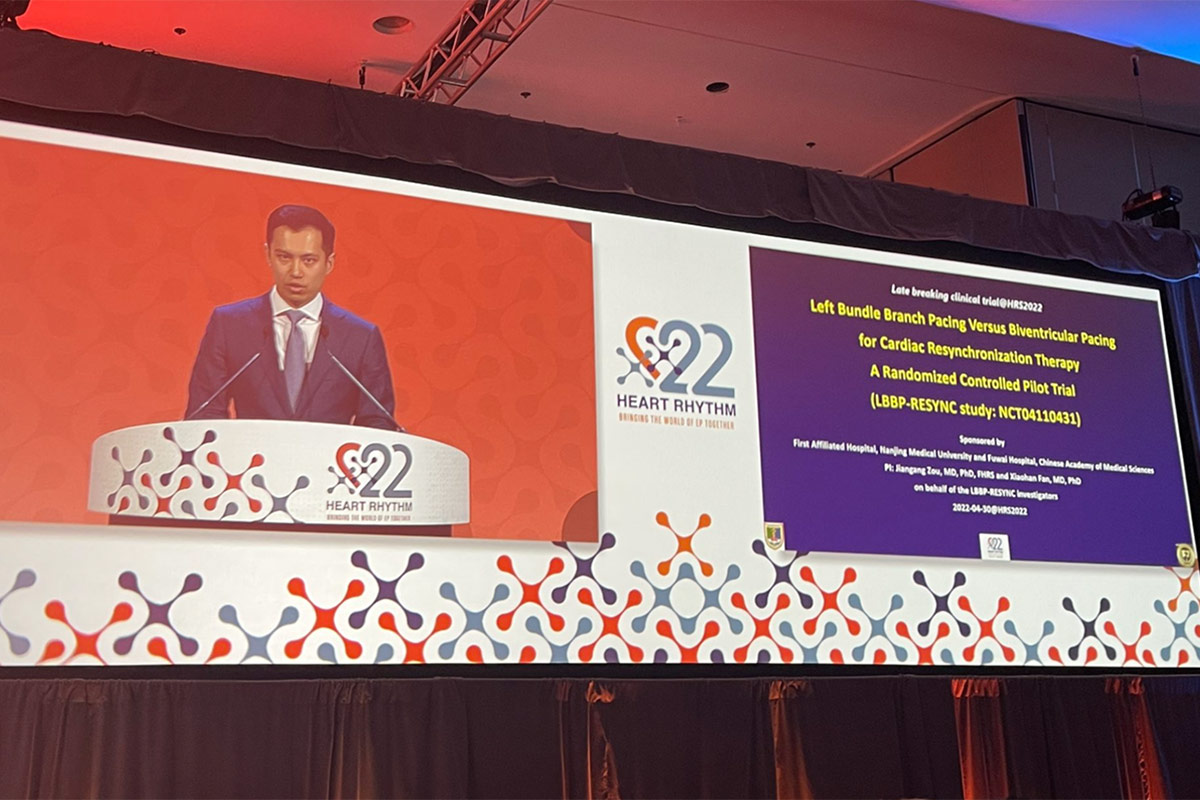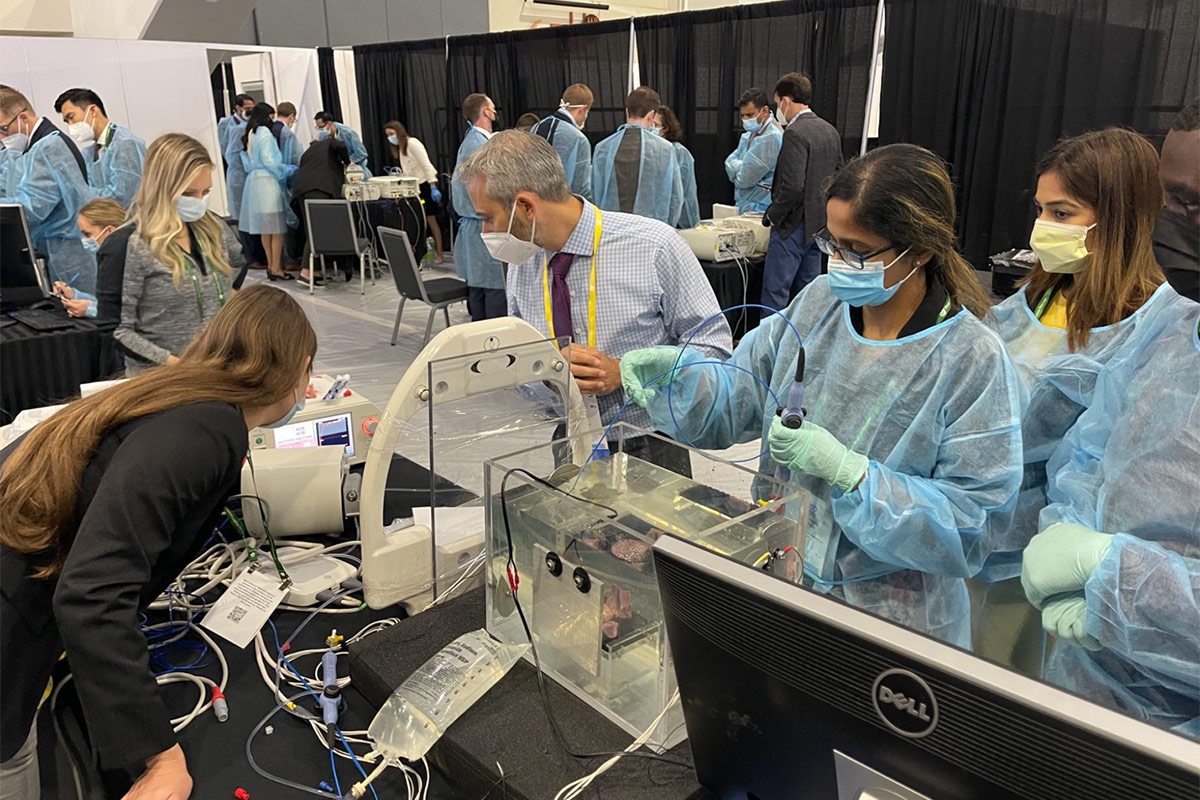An FIT’s Experience at Heart Rhythm Society 2022

As a first-time attendee, I was full of excitement and anticipation as I headed to San Francisco for Heart Rhythm 2022. I had my schedule pre-planned for the three days to include a variety of sessions, including late breaking clinical trials, fellows hands-on training, women in electrophysiology (EP) meetings and poster sessions.
My HRS experience kicked off early on Friday morning before the regular sessions with a fellows’ teaching event organized by Boston Scientific on approaches to complex intracardiac tracings and complex ablations.
Like me, the other FITs were eager to learn from Pierre Jais, MD, and Roderick Tung, MD, who shared challenging EGMs and helped us work our way to diagnosing the rhythms. Ingrid Hsiung, MD, a general cardiology fellow at Baylor Scott & White The Heart Hospital had this to say: “This was among my favorite sessions! Although this was geared towards fellows, many attendings in practice also attended.”
The lines outside Moscone Center on Friday morning were long as people lined up to verify their COVID-19 vaccination status and pick up registration badges. The excitement was palpable. Many people were meeting after years and it was a welcome sight after the long years of the pandemic. I proudly picked up “member,” “first-time attendee” and “presenter” ribbons to attach to my badge.
EP has seen many practice-changing advances in the recent years. According to Faisal Merchant, MD, FACC, from the Emory University School of Medicine and incoming chair of the Heart Rhythm Society (HRS) communication subcommittee, these include “evolution in leadless pacing, ILAM mapping, and more broadly high-density mapping for VT ablation as well as the broad availability of wearables that can detect subclinical atrial fibrillation.”
With the spirit of advancing EP, the late-breaking clinical trials sessions were among the most popular ones. There were a few notable trials that were shared. Specifically, big advances were made in the area of conduction system pacing (CSP).



The “Left Bundle Branch Pacing Versus Biventricular Pacing (LBBP) in Cardiac Resynchronization Therapy (CRT): A Randomized Controlled Pilot Trial” was the first prospective randomized head-to-head controlled trial to compare the clinical efficacy between LBBP and Biventricular pacing (BiVP), and the results revealed that the LBBP-CRT group significantly increased left ventricular ejection fraction compared to BiVP-CRT.
Similarly, “Clinical Outcomes of Conduction System Pacing Compared to Biventricular Pacing in Patients Requiring Cardiac Resynchronization Therapy” compared CSP with BiVP in a large observational cohort of patients with indications for CRT. CSP was associated with significant reduction in the combined endpoint of time to death or heart failure hospitalization.
The hands-on courses for fellows on cardiac anatomy, ablation biophysics and cardiac mapping were extremely popular. There were multiple sessions from Friday to Sunday and each had a long waitlist and long lines before the start time. These sessions were led by some of the masters in EP including Joshua Moss, MD; Usha Tedrow, MD, MSc; Saman Nazarian, MD, PhD; and Pasquale Santangeli, MD, to name a few.
One of the sessions I am personally very grateful to HRS for organizing was “FIT Meet the Mentors,” which comprised of 10 minutes small group discussions between fellows and some of the seasoned experts in EP. The conversations revolved around practical subjects such as working with professional societies and industry, becoming a published researcher and the age-old yet very relevant question of private vs. academic EP to gain insights and guidance from the experts.
The Women in EP luncheon struck a personal chord with me. This year the theme was gender pay disparity. There was an insightful presentation by Nate Gross, founder of Doximity, on the differences in salaries between male and female physicians. Doximity data suggests that the pay gap is most exaggerated in the first 10 years after completing training.
This was followed by some very helpful tips on how to close this gap by Lisa Murphy, the chief administrative office at the University of California San Diego. One reason why women physicians are reimbursed less than men is because they under-code and under-bill for their services and Murphy suggested that learning to code and bill more effectively may be one way to close the gender pay gap.
Besides the sessions, the innovations expo was popular as ever. I enjoyed practicing with mapping and ablation catheters and intracardiac echo simulations. Any discussion of Heart Rhythm 2022 would be incomplete without talking about the poster sessions, which are the hallmark of this scientific meeting.
The HRS has been trialing a new format for poster presentations with “silent” poster halls. While there were mixed opinions about this new format, the science and discussions remained as invigorating as ever.
It was wonderful to meet old friends and make new ones! I am extremely grateful to my mentors, training program, co-fellows, and of course, to the HRS for organizing this wonderful meeting and for their commitment to fellows’ education.

This article was authored by Arooj Khan, MD, chief cardiology fellow at the University of Iowa. Twitter: @AroojKhanMD.
This content was developed independently from the content developed for ACC.org. This content was not reviewed by the American College of Cardiology (ACC) for medical accuracy and the content is provided on an "as is" basis. Inclusion on ACC.org does not constitute a guarantee or endorsement by the ACC and ACC makes no warranty that the content is accurate, complete or error-free. The content is not a substitute for personalized medical advice and is not intended to be used as the sole basis for making individualized medical or health-related decisions. Statements or opinions expressed in this content reflect the views of the authors and do not reflect the official policy of ACC.
